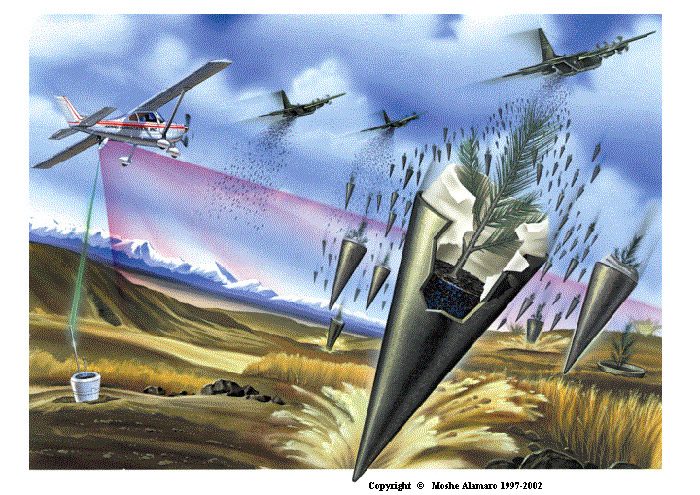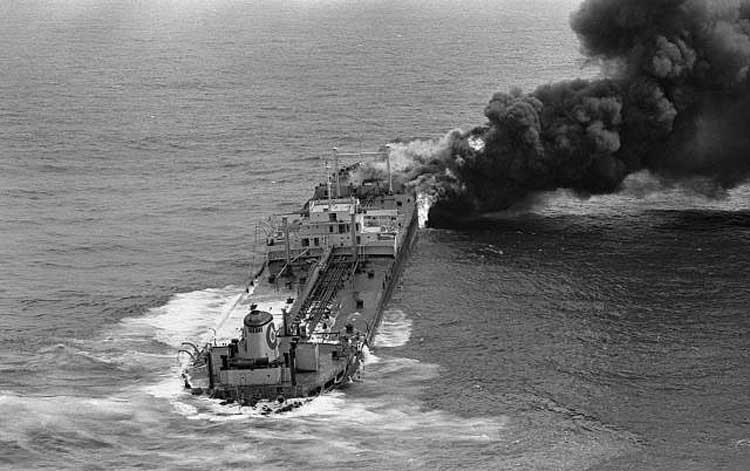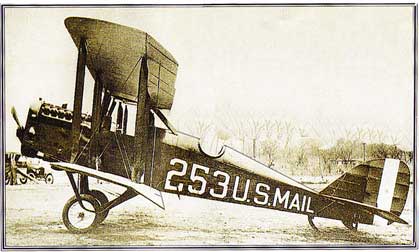11 warplanes that stopped killing and started helping

I’ve heard it said that you have to be a little bit mad to take an interest in military aircraft. As much as the more conscientious of us might try to ignore their intended functions, the fact remains that these are machines designed and built to kill people and break stuff.
But we can take solace in the fact that not all is so macabre about the technological wonders over which we salivate. Here are ten warplanes that beat their swords into ploughshares, renouncing their martial lives—even if only fleetingly—for decidedly more humane ones.
11. Lockheed C-130 Hercules ‘The Herky Farmer’
If averting a localised ecological disaster seems a contradictory task for a military aircraft, how about a role that could potentially help to combat the climate crisis?

The C-130 Hercules is best known as a madly successful tactical transport, that also happens to excel at almost every noncombat role its operators can think of; the proverbial jack of all trades, master of…all of them, really. It’s also got some serious teeth, whether as the AC-130 gunship or the MC-130 special operations variants used among other things as the launch platform for the GBU-43/B MOAB (Massive Ordnance Air Blast, a.k.a. Mother of All Bombs).
But the heroic Herc has also been used to drop decidedly more life-giving stores. Seed bombing—or, more diplomatically, aerial reforestation—has been around since the 1930s, but came into its own when a former RAF pilot, Jack Walters, came up with an idea to convert equipment used for laying landmines for dropping seed canisters. The concept, which now consists of placing a seed, fertilizer, and insecticide inside a biodegradable capsule that looks a bit like the bastard lovechild of a household plant pot and a howitzer shell, was adopted by Lockheed Martin. New technology like GPS, high-resolution cameras (sometimes attached to remotely piloted airships), and timed ejection devices not unlike the ones used by the likes of RAF Tornado fighter-bombers to crater runways during the Gulf War has made the method extremely efficient and cost-effective. Seed bombing has been used in places like Africa, Haiti, Scotland, and Mexico.
10. McDonnell Douglas F-4 Phantom II ‘Phantom Organ’

The F-4 Phantom II is best known for wreaking devastation from Southeast Asia to the Middle East, for being the tip of NATO’s spear at the height of the Cold War, and for generally being an obnoxiously noisy, smoky, brutish behemoth of a multirole fighter. But, just a few days before Christmas in 1986, one USAF pilot used his Phantom not to take a life but to save one.
The passing of four-month-old Michael McCann in North Dakota was certainly a heart-wrenching tragedy for the poor child’s family, but his death would not be in vain, as his heart was resuscitated and packed onto a Learjet with a team of doctors at Fargo’s Hector International Airport to be flown to San Francisco, where a five-month-old boy, Andrew de la Pena, desperately awaited a transplant. But disaster had seemingly struck when the Learjet’s engines failed to start in the cold weather. Time and options were running out. So, North Dakota’s governor put in a call to the Air National Guard.
Within minutes, an F-4D of the ND ANG’s 178th Fighter-Interceptor Squadron, the “Happy Hooligans,” who happened to be based at Hector, was scrambled. Because the F-4 was intended to be pretty much the polar opposite of an air ambulance, its cockpit isn’t climate controlled, so the organ—which had been out of the donor body at least eight hours, an eternity relative to the medical technology of the time—was placed in an ice-filled plastic cooler and strapped into the Phantom’s back seat, then flown by then Lieutenant (now Brigadier General) Bob Becklund the 1,446 miles (2,327 km) from North Dakota to California at just below supersonic speeds. De la Pena, who seems to be living a quite remarkable life, still has a special place in his heart (pun somewhat intended) for Becklund and the Air National Guard.
As for the Phantom, it promptly resumed its decidedly less humanitarian duties, which, in the case of the Happy Hooligans, primarily involved air defense of the North American continent. This instance wasn’t the only occurrence of a fast jet being used to carry an organ transplant; I’m sure I read that the Royal Norwegian Air Force did something similar with an F-16, but I can’t find the article.
9. Polikarpov Po-2 ‘Night witch of the harvest’

One of the ten most widely produced aircraft in history, this seemingly unassuming biplane had always lived a double life. Sometimes known as the U-2 (“U” for uchebnyy, “trainer”), to be confused with neither the American spy plane nor the disappointing Irish rock band, the sturdy and brilliantly uncomplicated Polikarpov’s value extended far beyond training pilots. The type was used for light bombing, reconnaissance, liaison, and propaganda duties, as well as psychological warfare, where Soviet pilots would fly low over German encampments using their mount’s five-cylinder Shvetsov M-11 engine, with its stentorian popping sound, to deprive their enemies of sleep and fray their nerves with simulated bombing runs. The Luftwaffe found engaging the biplanes particularly difficult, as they flew at treetop level and too slow for the German fighters to manoeuvre into position on. The all-female 588th Night Bomber Regiment used the Po-2 to great effect against the German rearguard. It would see service again in the Korean War, where it was used in night raids on UN bases, which the Americans came to call ‘Bedcheck Charlie.’ The Po-2’s wooden construction gave it an (relatively) infinitesimal radar cross section, rendering it almost immune to night fighters, and its slow speed earned it at least one ‘kill’ when an F-94 Starfire stalled and crashed trying to shoot one down.
But this was just one persona. The other, known as Kukuruznik, was, as its nickname (which translates roughly as ‘corn-sprayer’) suggests, a crop duster. The ethics surrounding the Soviet Union’s agricultural programmes and practices are dubious at best—this is the state, after all, that managed to dry up the Aral Sea—but the harvests were in good hands (wings?) for whoever the state decided was worthy of providing for, with variants of the Po-2 able to deliver up to 250 kg of pesticides. The Po-2 was also built under license in Poland and used as an air ambulance.
8. Avro Shackleton ‘The contra-rotating Nissen hut’

Aircraft are usually associated more with environmental degradation than environmental protection, but on one rather controversial occasion in 1971, the Avro Shackleton was credited with averting an ecological catastrophe.
The South African Air Force was the sole export customer for the Shackleton maritime patrol bomber, with 35 Squadron acquiring eight MR3 variants beginning in 1957 to replace the Short Sunderland. Fourteen years after its introduction, a SAAF Shack found itself called upon to deploy its armament—not against Soviet submarines, but an oil tanker. On 27 February of that year, the SS Wafra suffered a steam turbine failure while en route to Cape Town, causing the engine room to flood. An attempt was made to tow the stricken vessel into port, but the tow cable snapped, and Wafra ran aground on a reef near Cape Agulhas, rupturing eight of the tanks and spilling at least 26,000 tons of crude oil (some accounts say far more), swamping beaches and polluting a penguin colony.
While efforts were made to mitigate the extent of the spill, the ship itself remained on the reef, still leaking oil. The decision was made to sink the vessel before any more damage could be done. In early March, Wafra was refloated and towed off the reef, where she promptly broke apart. The larger portion was towed 200 miles out to sea (leaking oil all the way), at which time the SAAF was called into action. First on scene were Buccaneer strike bombers of 24 Squadron, which fired AS-30L laser-guided air-to-ground missiles at the hulk, succeeding only in starting a fire. (If only they’d taken note of the British debacle following their similar attempt four years earlier in the disaster of the tanker Torrey Canyon.)
Clearly, a change in tactics was needed. On 12 March, the SAAF deployed its Shackletons, dropping a total of nine depth charges on the tanker, which quickly broke apart in 6,000 feet of water, a depth where the remaining oil would pose no further threat to the coastline.

Like the F-4, the Shackleton went right back to its military duties, but for that moment, it got to play the saviour to human, avian, and marine life alike.
7. Curtiss C-46 Commando ‘Ol’ Dumbo to the rescue’

I was going to try to avoid listing transport aircraft, as cargo haulers don’t (usually) participate directly in the killing, and almost every transport type has been used in some form of humanitarian role such as disaster relief. But the vital work that the C-46—once the poster child for flying the ‘Hump’ in the China-Burma-India Theatre of World War II—continues to perform in the far north makes it worthy of a mention.
Transportation in the northern reaches of North America is a logistical nightmare. Road infrastructure is spartan at best, and frozen ports and rivers preclude seaborne shipments in some places for large portions of the year. Aviation isn’t just a luxury—it’s many communities’ lifeblood. The C-46, together with former war veterans such as the C-47, C-54, and C-118, flies with operators like Buffalo Airways in Canada and Everts Air in Alaska to deliver much needed supplies and especially fuel, providing a year-round link for isolated communities.
6. Bell AH-1 Cobra ‘Snakes on a plain’

It’s no rarity for military helicopters to have second lives in the civilian sector. Types ranging from the Bell Huey (and its myriad variants) to the Boeing Chinook and Mil Mi-8 have been employed in tasks like construction, logging, passenger carrying, search and rescue, policing, and giving television watchers an eagle-eyed view of the latest horrible event in their hometown on the evening news.
You’ll note that none of those aircraft are attack helicopters, which are generally designed with a singular, macabre purpose in mind. But with the right creativity, even these killing machines can be repurposed for the good of humankind. In the early 2000s, the U.S. Forest Service acquired a number of Army-surplus AH-1Fs, ditching the guns and hardpoints for additional cameras and sensors, creating the Firewatch Cobra. While the USFS Firewatch aircraft don’t directly fight fires, a handful of surplus AH-1Ps acquired by the Florida Department of Forestry and renamed Bell 209 Firesnake are equipped to carry water and retardant systems. Instead, the Firewatch Cobra is used to relay information to ground crews and fixed-wing air tankers to facilitate a more accurate and effective attack. Its infrared sensors can detect flames through heavy smoke, and it can transmit high-resolution images of the fire from its low-light cameras to ground teams up to thirty miles away.
5. Rockwell OV-10 Bronco ‘Broncosaurus Flex’

Apropos of aerial firefighting, the Bronco, better known as the slower, uglier, more American Pucará, is essentially the fixed-wing version of the aforementioned Cobra. The California Department of Forestry and Fire Protection—CAL FIRE—acquired a number of these former counterinsurgency aircraft to replace the O-2 Skymaster to provide airborne command and control, a set of eyes in the sky for the incident commander on the ground. Crewed by a pilot and an air tactical group supervisor, the Bronco provides a manoeuvrable platform with excellent cockpit visibility for observing a fire’s dynamics and directing fixed- and rotary-wing tanker assets.
4. Airco DH.4 ‘A letter from the flaming coffin‘

The end of World War I saw a flood of surplus military aircraft into the civilian market, many of them finding new lives carrying mail. Airmail was one of the earliest large-scale non-military applications of aircraft; after all, in an era long before email and robocalls and social media, the fastest way to get your spam to fools in other parts of the world was to stick it in a stamped envelope and send it on its way. Then, just as today, speed was a priority, and as such, companies such as United Airlines, today one of the largest air carriers in the world, got their start hauling letters and parcels.

Several ex-Army types were employed on mail runs and limited passenger-carrying services, but Geoffrey de Havilland’s light bomber stands out, finding success on mail runs on both sides of the world, with Qantas and the U.S. Post Office making extensive use of the aircraft, the latter modifying it into the DH.4B variant with an enlarged rudder. The DH.4B was used to establish the first transcontinental airmail service in North America, between San Francisco and New York, operating from 1924 until the privatization of airmail in 1927. The DH.4 also saw extensive postwar use in Canada, where it was used for forestry patrol.
3. Avro Lancaster ‘Lanc-danke’
There’s an old Japanese proverb that ends with “the sword that kills is the sword that gives life.” While in its full context that statement refers to something entirely different, taken in isolation, it’s a fitting aphorism for the role of the Lancaster over Berlin: the bomber that once rained death and destruction down on the city would be aiding in the effort to keep its citizens alive just a few short years later.
During the Berlin Airlift of 1948-49, the Allies scrambled to scrounge together as many aircraft as they could to maintain the air bridge into besieged Berlin. While the C-54 Skymaster and C-47 Skytrain are the aircraft everyone thinks of when they hear Berlin Airlift, a number of types were called upon to carry rations to the city’s inhabitants, the Lancaster bomber (together with the Lancastrian, an airliner and transport derived from the Lanc) among them. One can only imagine the thoughts going through the head of any Berliner with a knack for aircraft identification, seeing the aircraft that had been used to raze vast swathes of their city now bringing in the goods to rebuild it.
Want to see more stories like this: Follow my vapour trail on Twitter: @Hush_kit

Preorder your copy today here.
The Hush-Kit Book of Warplanes is a beautifully designed, highly visual, collection of the best articles from the fascinating world of military aviation, hand-picked from the highly acclaimed Hush-Kit online magazine (and mixed with a heavy punch of new exclusive material)


This site will pause operations if it does not hit its funding targets. If you’ve enjoyed an article you can donate here and keep this aviation site going. Many thanks
2. Lockheed P-2 Neptune ‘The Truculent Fire Turtle’

Large ex-military aircraft often find retirement jobs fighting wildfires—those air tankers that the Cobra and Bronco we talked about get to guide to their targets. Former naval types such as the PBY Catalina, CS2F Tracker, AF-2S Guardian, and PB4Y Privateer have been particularly attractive for this role. The P2V (later P-2) Neptune had arguably the most successful career of them all, with its 2,000-gallon water/retardant capacity and the power boost from its underwing J34 turbojets that came in handy when operating at low level in mountainous terrain.
The Neptune’s potential as an air tanker was realized in the late 1980s, and it flew with numerous operators including Aero Union, Minden Air, and the aptly named Neptune Aviation. Air tanker P-2s featured a sophisticated (for the time) digital metering system featuring computer-controlled, electro-hydraulically actuated doors for a continuous water or retardant release from 50 to 700 US gallons per second, allowing for a uniform dispersal pattern eliminating gaps or overages.
Alas, aerial firefighting is no walk in the park, and at least nine tankers were destroyed in accidents over the type’s thirty-year firefighting career, with several more experiencing landing gear failures toward the end of its service life. A high-profile crash in 2012 precipitated the end of the Neptune in air tanker service, and the last user, Neptune Aviation, retired theirs in 2017, replacing them with modified BAe 146s.
1. Lockheed P-3 Orion ‘Friggerock ‘n’ Roll’

Not to be outdone by its predecessor, the P-3 Orion continues to perform sterling work nearly sixty years after it entered service. From dubious roots in the troubled L-188 Electra airliner, the Orion has evolved into an aircraft that, in addition to being one of the most successful maritime patrol aircraft in history, has been indispensable in ancillary roles like long range search and rescue, fisheries patrol, and ice monitoring. And that’s just the ones still in military service.
Like the Neptune before it, some Orions were converted into air tankers. But putting the wet stuff on the red stuff isn’t all the P-3 has been up to in its new life. NASA’s Goddard Space Flight Center operates a P-3B from its Wallops Flight Facility in coastal Virginia as an aerial science laboratory. But perhaps the best-known civvie Orions are the WP-3Ds of the National Oceanic and Atmospheric Administration (NOAA)—the Hurricane Hunters. Together with some USAF WC-130Js, these aircraft and their crews brave some of the most treacherous weather on earth to acquire real-time storm data to save countless lives.
-Sean Kelly is an operations supervisor at Pittsburgh International Airport who spends most of the time he isn’t being paid to do things related to aircraft doing things related to aircraft (and occasionally writing science fiction).


https://www.vg.no/nyheter/innenriks/i/ejp8M/norsk-f-16-reddet-doedssyk-hjertepasient